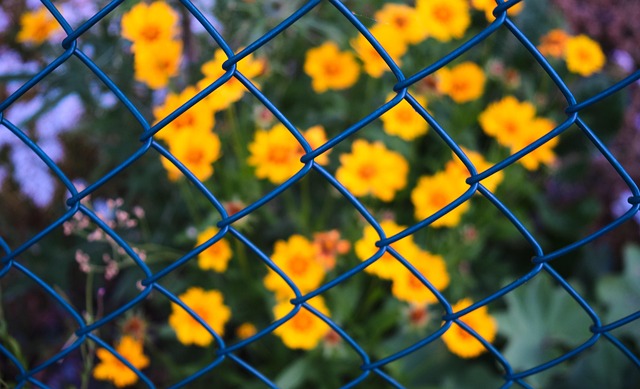Large properties present unique fencing challenges, demanding durable, cost-effective solutions that span vast areas. This article explores practical and economical fencing options for extensive land, focusing on materials, design, installation, and maintenance. By understanding specific needs and leveraging budget-friendly yet long-lasting materials like wood and vinyl, homeowners can enhance their property’s security and aesthetics without breaking the bank. Key considerations for successful cost-effective fencing are also provided to guide informed decisions.
- Understanding Fencing Needs for Large Properties
- Budget-Friendly Materials: Wood and Vinyl
- Longevity: Choosing Durable Fences
- Creative Design Options for Large Spaces
- Installation Tips for Cost Savings
- Maintenance: Keeping Your Fence Economical
Understanding Fencing Needs for Large Properties
Large properties present unique fencing challenges compared to smaller plots. The primary considerations are durability, security, and aesthetics, all while managing costs effectively. Property owners must assess the perimeter’s length and potential vulnerabilities, such as adjacent waterways or uneven terrain.
Fencing solutions for large areas need to withstand harsh weather conditions and potential damage from wildlife or passing vehicles. Security is paramount, especially in remote locations, necessitating robust materials and designs that deter intrusions. Striking a balance between security and visual appeal is crucial, ensuring the fence complements the property’s natural beauty without overwhelming it.
Budget-Friendly Materials: Wood and Vinyl
When considering cost-effective fencing solutions for large properties, wood and vinyl emerge as popular choices due to their affordability and versatility. Wood has long been a staple in fencing, offering a natural aesthetic that can complement any landscape. Treated wooden posts and rails are particularly durable and resistant to rot, making them a smart investment for both residential and commercial projects. On the other hand, vinyl fencing is another budget-friendly option known for its low maintenance requirements. This material is available in various styles, from traditional picket fences to sleek, modern designs, allowing homeowners and property managers to achieve their desired look without breaking the bank.
Both wood and vinyl are relatively easy to install, reducing labor costs compared to more complex materials. Moreover, they can be painted or stained to match specific color schemes or complement existing structures, providing further customization options. With regular upkeep, these fencing types can last for many years, making them excellent choices for those seeking both style and savings in their large-property fencing projects.
Longevity: Choosing Durable Fences
When considering fencing for large properties, longevity should be at the forefront of your decision-making process. The fence not only serves as a boundary but also as an investment that can significantly impact the value of your property over time. Opting for durable materials such as steel, vinyl, or high-quality wood ensures your fence withstands the test of time and extreme weather conditions. These materials are less prone to rust, rot, or damage, reducing the need for frequent replacements and repairs.
Choosing fences that offer longevity also means selecting designs that can adapt to various terrains and property layouts. From post-and-rail fences to chain link or even custom metal work, durable fencing options cater to diverse aesthetic preferences while ensuring structural integrity. By prioritizing longevity, you not only save on immediate costs but also enjoy a consistent, visually appealing boundary for years to come.
Creative Design Options for Large Spaces
Large properties offer an exciting canvas for creative fencing design. Beyond traditional straight lines and rectangular shapes, there’s a world of options to enhance the aesthetic appeal and functionality of your fence. Consider winding paths that snake through your land, incorporating natural contours and creating a sense of exploration. Incorporate diverse materials like wood, metal, or even living plants to add depth and texture. Arched entryways, trellises adorned with vines, and custom-cut panels with intricate patterns can all contribute to a unique and visually appealing fence that reflects the beauty of your property.
Think beyond mere separation; your fence can become an integral part of your landscape design. Strategically placed fences can create distinct areas for various uses—from expansive open spaces for recreation to cozy nooks for relaxation. Incorporate lighting into your design for safety and ambiance, and don’t underestimate the power of color. A vibrant fence can be a striking focal point, while subtle tones blend seamlessly with the surroundings. With endless possibilities, your large property has the potential to showcase a fencing masterpiece that blends art and functionality.
Installation Tips for Cost Savings
When installing a fence on a large property, one of the most cost-effective strategies is to plan the layout meticulously. Start by identifying areas where natural features like trees, bushes, or existing structures can serve as barriers, reducing the need for extensive fencing. This not only saves on materials but also labour costs.
Consider DIY methods for parts of the fence. Pre-assembled fence panels are a great option for straight runs, and they can be installed relatively quickly with basic tools. For complex designs or curved sections, hiring professionals might be more economical in the long run due to their expertise in handling challenging installations. Regular maintenance is key to preserving the longevity and appearance of your fencing system, which can also prevent costly future repairs.
Maintenance: Keeping Your Fence Economical
Fencing your large property doesn’t have to break the bank, but ongoing maintenance can impact the long-term cost-effectiveness of your choice. One of the key benefits of many modern fencing materials is their low-maintenance requirements. For example, vinyl and composite fences are designed to resist fading, cracking, and peeling, reducing the need for frequent cleaning or repairs.
Regular inspections, however, remain crucial. Check for any signs of damage, such as broken boards or posts, and address them promptly to prevent small issues from escalating. A simple coat of paint or sealant can go a long way in protecting wood fences, while metal fences may only require occasional cleaning with a soft brush and mild detergent. By keeping up with these basic maintenance tasks, you’ll ensure your fencing solution remains economical for years to come.
